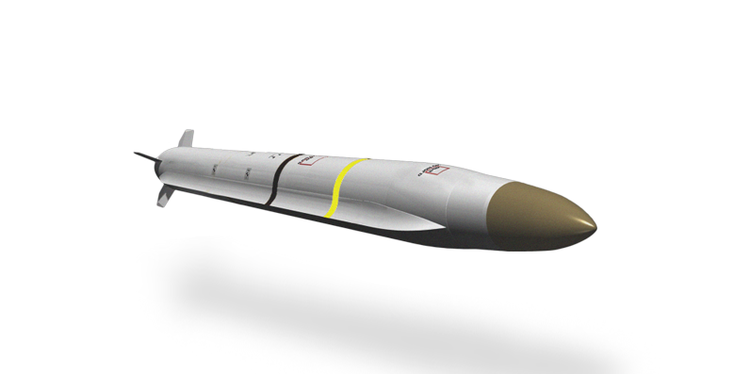The Air Force has awarded Northrop Grumman a $705 million contract for a three-year program to develop and test the classified Stand-in Attack Weapon (SiAW), a supersonic air-to-ground missile which will be used to clear a path through adversary air defenses and take out high-value targets in potential future conflicts.
Under previous, classified competitive Phase 1 contracts to Northrop, L3Harris, and Lockheed Martin, the Air Force was looking toward a five-year development and production program that will provide SiAWs to operational units by 2026. The F-35 is the initial platform for the SiAW, and the Air Force has indicated the B-21 bomber may also carry the weapon.
“During the next 36 months, Northrop Grumman will further develop the weapon, conduct platform integration and complete the flight test program for rapid prototyping in preparation for rapid fielding,” the company said in a press release. “Work will be performed at the company’s Northridge, Calif., facility” as well as its “factory of the future” missile integration facility at Allegany Ballistics Laboratory in West Virginia.
Northrop’s SiAW builds on its Advanced Anti-Radiation Guided Missile (AARGM), which in turn succeeds the AGM-88 HARM (High-speed Anti-Radiation Missile). The HARM, which entered service in the 1980s, was used with great effect during Operation Desert Storm by quickly homing in on and destroying ground-based search and track radars before they had a chance to move to a new location. The weapon was so effective that Iraqi radar operators were deterred from turning on their systems, knowing a HARM would likely arrive a few seconds later.
According to Northrop, SiAW is meant to “defeat rapidly relocatable targets” that are part of an enemy’s anti-access/aerial denial system, but industry and Air Force officials have said SiAW’s target set will go beyond air defense radars and include:
- command-and-control sites
- ballistic missile and cruise missile launchers
- GPS jamming systems
- anti-satellite systems
- Other high-value or fleeting targets.
The SiAW is also supposed to be faster than HARM and be effective against targets at greater range. Northrop’s website says the SiAW addresses “gaps created by 2025+ threats.”
Despite the weapon’s longer range, the term “stand-in” indicates that it operates within an enemy’s defended airspace. Since the 1980s, the effective range of integrated air defense systems worldwide has multiplied.
The SiAW will have multiple seeker sensors and use GPS in addition to other navigational systems. The missile employs tail control and has “enhanced survivability,” Northrop said.
The SiAW will have an open architecture “that will allow for rapid subsystem upgrades to field enhanced capabilities,” according to Northrop. While the Air Force has not disclosed its SiAW acquisition strategy, service officials have said that those companies not selected to develop the weapon will have a chance to propose later upgrades for it.
The contract covers Phase Two of the program, a Middle Tier Acquisition effort utilizing digital engineering. In Phase 2.1, a guided vehicle will make a flight test, while Phase 2.2 “concludes with three additional flight tests and the delivery of the SiAW leave-behind prototype missiles and test assets,” the Northrop release stated.
Air Force funding for SiAW in fiscal 2023 was $283.3 million, with peak funding of $718.2 million expected in 2026.




